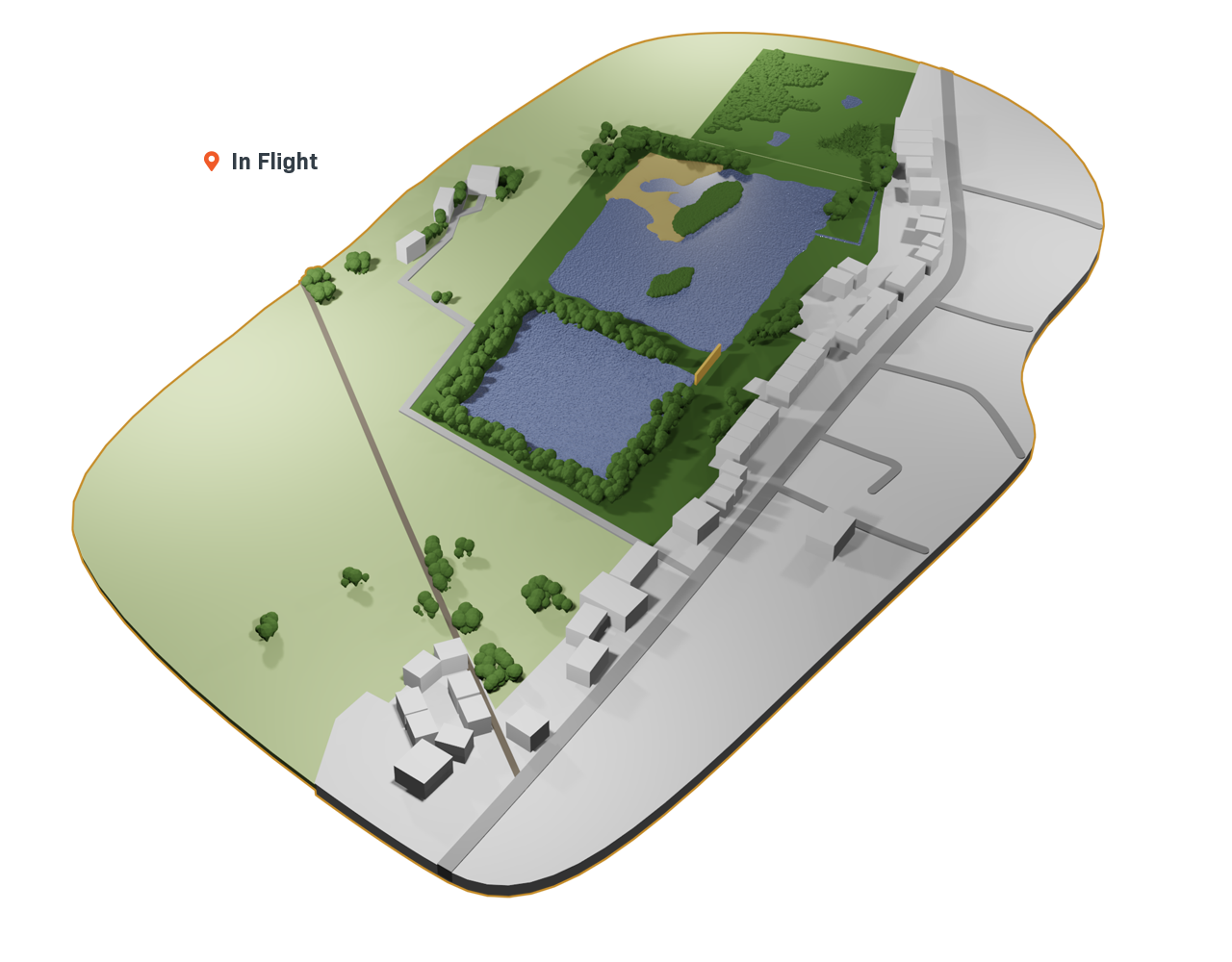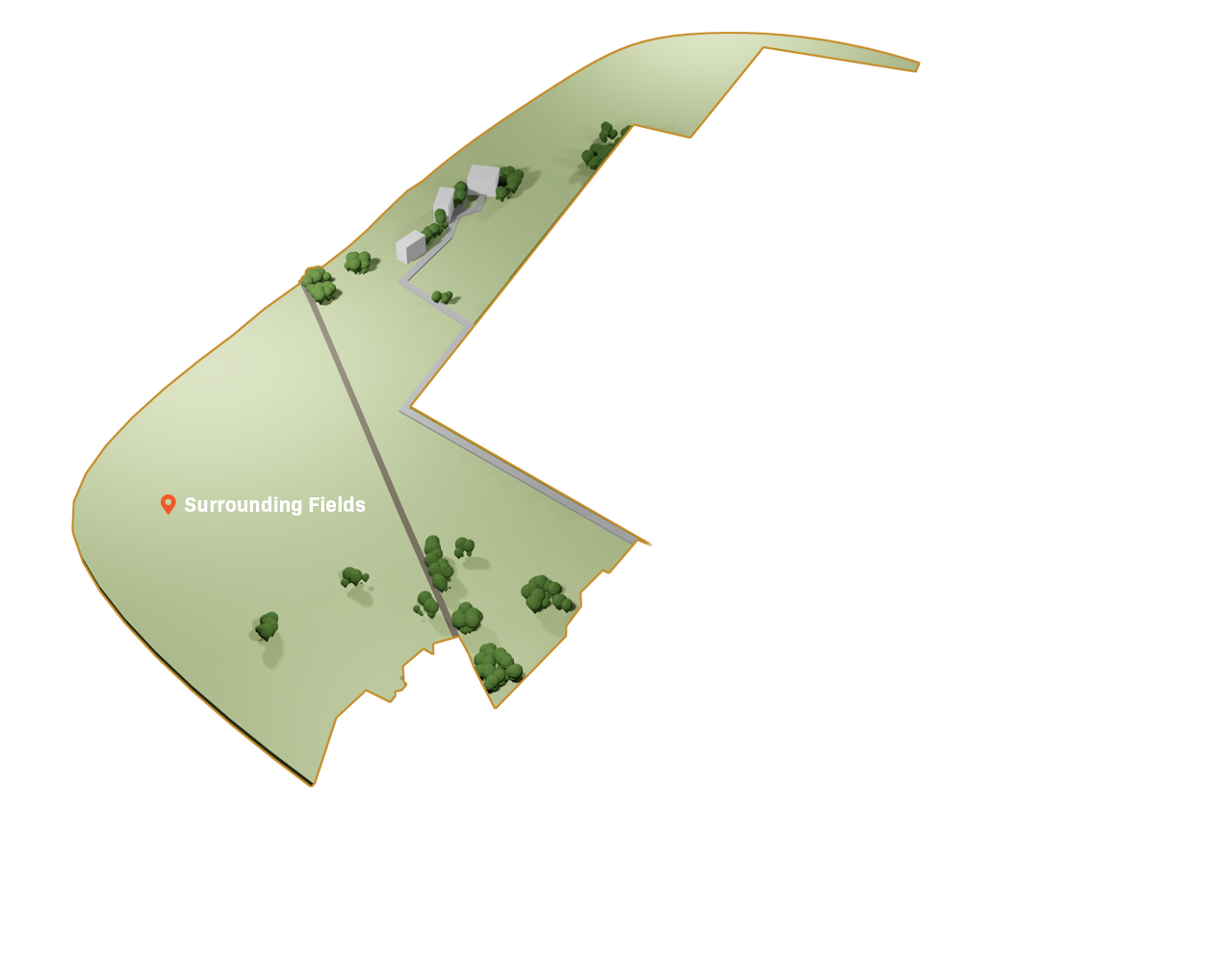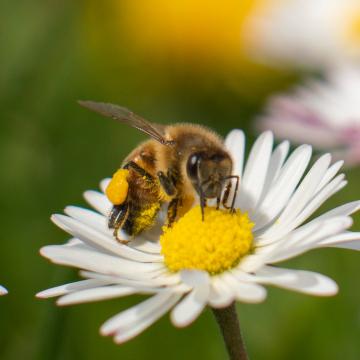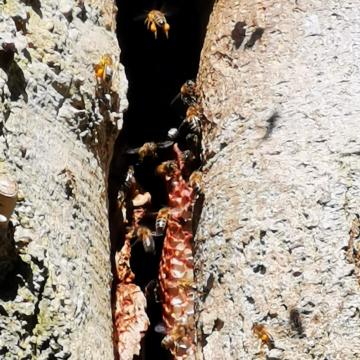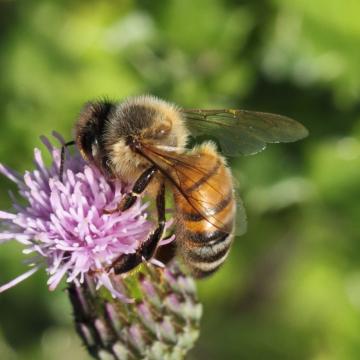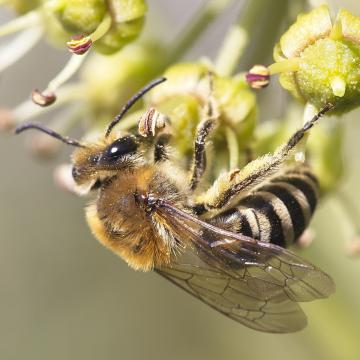Apis mellifera mellifera
Frequent
Summary
There is one main species of honeybee in the UK, and for the most part, they are domesticated and kept in hives of up to 20,000 for their honey.
It is rare to find a truly wild colony, but we know there to be one nesting in the hollow a tree in one of the gardens backing onto the wetlands.
Honeybees live in large hives made up of wax honeycomb, and they make honey from the pollen and nectar they collect from flowers, which you can often see collected on their legs.
They live in colonies of up to 80,000 during the active season, with one queen, hundreds of male drones and thousands of female worker bees.
Black English Honey Bee facts and statistics
• Eat nectar and pollen
• The 'smell' of a bees venom causes other bees to attack.
• Bees only attack when threatened
• They sting once
• Queens live for several years
• Every year, a new queen takes over from its mother or leaves to establish a new colony
• In winter, the drones are expelled and workers huddle together for warmth, feeding off pollen and honey stores
How to identify
• Identified by slim, sandy thorax and black abdomen with golden-amber bands.
• Up to 15mm long
• Queens about 20mm long
Habitat
Widespread - found throughout the UK, anywhere with plenty of flowers.
Ways to help
You can make a bee hotel and ensure that your garden is full of lots of nectar and pollen-rich flowers to support your local honeybee population.
Black English Honey Bee sightings at Grimsargh Wetlands

